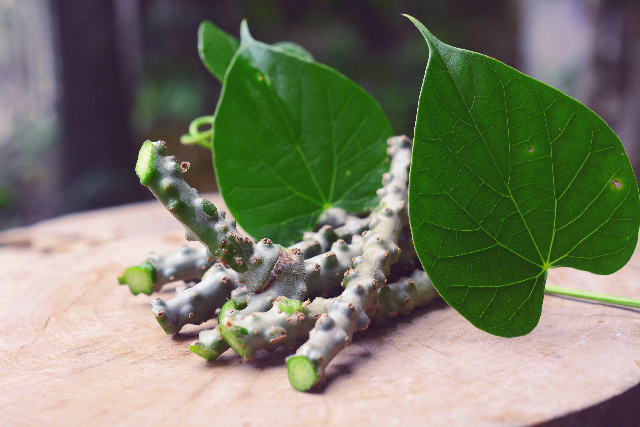Olive byproducts, when added to sunflower oil, can improve oxidative stability
05/24/2019 / By Evangelyn Rodriguez

The role of antioxidants is not just restricted to your body, it extends to the food that you eat. Just as they protect your cells from oxidative damage, antioxidants also protect food from spoilage caused by oxidation. A recent study conducted by researchers from the Abant Izzet Baysal University in Turkey investigated the possible application of olive mill wastewater and olive pomace — two byproducts of industrial olive oil production — in food preservation. They combined extracts from these two sources with food additives like lecithin and ascorbyl palmitate and examined their ability to preserve sunflower oil from the negative effects of oxidation. The results of their study were published in the Journal of Food Processing and Preservation.
From waste to source of food additives
There are three mechanical extraction methods used to obtain olive oil from fresh olive fruits. Two of these methods – namely, discontinuous pressing extraction and three-phase centrifugal extraction – produce not only olive oil, but also olive mill wastewater (OMW) and olive pomace (OP). Due to the high demand in olive oil, the annual world OMW production is estimated to be between 10 and 30 million cubic meters. However, these byproducts, which are considered wastes by the industry, can cause unwanted effects to the environment if disposed haphazardly, so there is considerable concern about their treatment and proper disposal.
OMW is an acidic, dark-colored suspension of water, oil, and olive kernel. It consists mostly of water (83-94 percent), 0.4-2.5 percent mineral salts, 0.03–1.1 percent lipids, and 4-16 percent organic compounds. Due to its unpleasant odor and high organic content, OMW is considered as one of the most polluting wastes produced by the food industry. However, the phenols found in OMW are too valuable to destroy or simply discharge to the environment, so researchers are continuously searching for ways to recover these useful compounds and study them for commercial purposes. The same is currently being done about OP, or the sludge byproduct of centrifugal extraction. OP is also rich in valuable compounds that can be used for various applications.
Olive mill wastewater and olive pomace extracts are rich in antioxidants
For their study, the researchers looked into the effects of OMW and OP extracts (1 and 2 mg/g), lecithin (L, 1-5 mg/g), and ascorbyl palmitate (AP, 0.2 mg/g) on the oxidative stability of refined sunflower oil (SFO) and its purified triacylglycerols (TAGs).
Edible oils contain high amounts of unsaturated fatty acids, which are susceptible to oxidation during heat-requiring food processes. Natural antioxidants are preferred and used to increase the oxidative stability of these edible oils. The researchers hypothesized that OMW and OP extracts in combination with L and AP can increase the oxidative stability of SFO. They believe that the phenolic compounds present in OMW and OP have high antioxidant capacity. (Related: Essential oils could be used as a natural preservative for bread.)
Under accelerated oxidation conditions, the researchers found that OMW extracts (1 mg/g) obtained using methanol as solvent increased the induction period of TAGs from 6.84 to 11.27 hours. Meanwhile, OP extracts provided less protection (9.79 hours) at 90 C in Rancimat. They also found that the K232 values of SFO with extracts (1 mg/g) and AP (0.2 mg/g) were lower than those of SFO with butylated hydroxytoluene (BHT) or butylated hydroxyanisole (BHA), and alpha-tocopherol-containing oil samples at 60 C. Binary combinations of extracts with AP (0.2 mg/g) or L (5 mg/g) also effectively decreased the K232 and K270 values of TAGs during oxidation.
K232 and K270 values correspond to UV absorbance at 232nm and 270nm. K232 values increase due to inappropriate storage, old-fashioned extraction or standardization procedures, and the presence of primary oxidation products. K270 values, on the other hand, increase due to lack of freshness and the presence of secondary oxidation products. BHT and BHA are synthetic antioxidants.
Based on these results, the researchers concluded that OMW and OP extracts can be synergistically used with L or AP to increase the oxidative stability of SFO and preserve it from spoilage caused by oxidation.
Sources include:
Tagged Under: antioxidants, Ascorbyl palmitate, edible oils, food additives, food byproducts, Food Preservation, food processing, food production, food science, food spoilage, food waste, lecithin, natural ingredients, olive byproducts, olive mill byproducts, olive oil production, olive pomace, rancidity, recycling, research, Sunflower oil
RECENT NEWS & ARTICLES
COPYRIGHT © 2017 RESEARCH NEWS



















